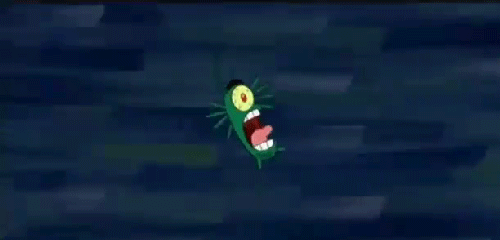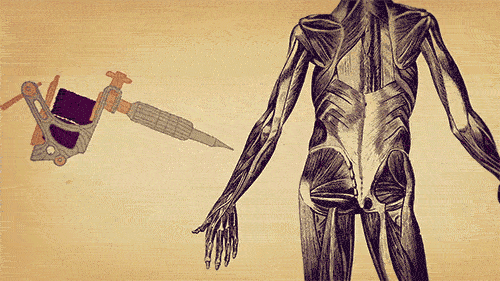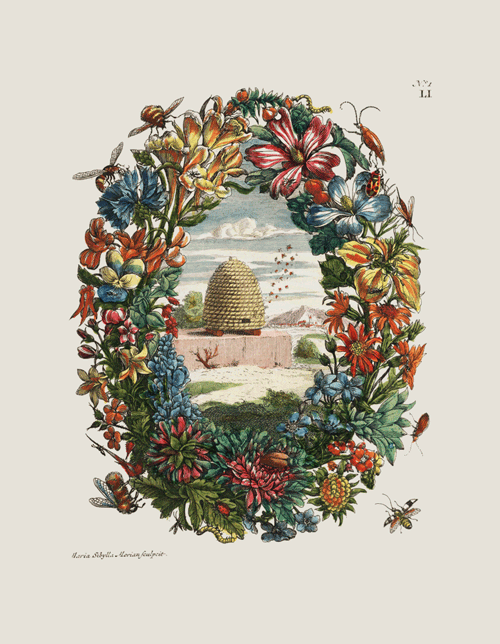Wildfires are taking the frost out of permafrost
A weekly roundup of the best in science journalism, doodled.

NPR has a great story about the aftermath of wildfires in Alaska, which have already burned through five million acres this summer. The ground up there has thick layers of duff, which is vegetation—fallen leaves, branches, etc.—that doesn’t decompose because of the cold. Duff lies atop permafrost and insulates this frozen layer of earth that stores two times as much carbon as the atmosphere. Too bad duff is flammable. When a wildfire comes and burns through it, the underlying permafrost becomes exposed to the warmer temperatures above. As it melts, the permafrost releases the carbon it had been holding for tens of thousands of years.
* * *
Not just a threat to oysters and coral, ocean acidification is going after phytoplankton (which is bad news for everybody).

Phytoplankton are at the bottom of the food chain. This might make them sound unimportant, but these little green guys supply the planet with half of its oxygen. Phytoplankton are also so integral to the food web that new findings about how they’ll fare as oceans acidify have some marine scientists pretty rattled.
Scientists already know that the amount of carbon absorbed by the seas will harm marine organisms, but a new study predicts an even greater level of upheaval than expected. In the lab, some plankton species die in more acidic conditions, while others flourish. When researchers paired that data with what we know about ocean circulation, they found that acidifying seas will throw off the natural competition between plankton species—and the consequences will ricochet up the food chain. All the way up.
* * *
Fish mucus: the latest in beauty care.

You never see a sunburned fish, do you? That’s because the mucus on the scales and eyes of fish contain natural compounds called mycosporines, which absorb UV-A and UV-B light. They function as a kind of molecular sunscreen. Algae and other microorganisms have them, too. Humans, on the other hand, have to make their own UV-blocking concoctions, some of which aren’t that effective or might be bad for us over the long run.
So scientists from Sweden’s AlbaNova University Center and Spain’s University of the Basque Country are taking a cue from fish to develop smarter skin-protecting strategies
Humans have been looking to use mycosporines for a while, but apparently they’d slide right off our skin, rendering them ineffective. Enter another cue from nature—chitosan, a polymer found in shrimp shells, insect exoskeletons, and the cell walls of fungi. Chitosan’s scaffolding-like structure helps the mycosporines stay put, and when the researchers combined them, they created an all-natural, nontoxic, and biodegradable sunscreen that can keep absorbing ultraviolet rays for at least 12 hours in temperatures as high as 176 degrees Fahrenheit.
Who knows—maybe by next summer you’ll be suiting up and crab-shell smearing up. See you on the beach!
* * *
Hey anti-vaxxers, go swarm a beehive.

Before you were born, your mom was busy getting infected with all kinds of viruses, bacteria, and other microbes. As she fought off diseases, she developed antibodies that would recognize those pathogens and then run around her body chasing them down. This is called adaptive immunity, and it’s similar to how vaccines work by “priming” your body’s defensive response. Once attached to pathogens, her antibodies would either disarm them or tag them for destruction. We inherit some antibodies from mom while in the womb as well as through breast milk.
Bees don’t have antibodies, but luckily for them, their moms (the queens) pass along a different kind of adaptive immunity. New research published last week in PLOS Pathogens suggests that a protein called vitellogenin binds to bacteria the queen bee encounters and then travels from her ovaries into her eggs.

Now that they know this immune process is happening, researchers hope to be able to somehow harness this knowledge to help these important pollinators stay healthy as they face new pathogens and pesticides. And that could help keep us healthy, too—or at least well-fed.

This article was originally published on onEarth, which is no longer in publication. onEarth was founded in 1979 as the Amicus Journal, an independent magazine of thought and opinion on the environment. All opinions expressed are those of the authors and do not necessarily reflect the policies or positions of NRDC. This article is available for online republication by news media outlets or nonprofits under these conditions: The writer(s) must be credited with a byline; you must note prominently that the article was originally published by NRDC.org and link to the original; the article cannot be edited (beyond simple things such grammar); you can’t resell the article in any form or grant republishing rights to other outlets; you can’t republish our material wholesale or automatically—you need to select articles individually; you can’t republish the photos or graphics on our site without specific permission; you should drop us a note to let us know when you’ve used one of our articles.

How to Make an Effective Public Comment
From Dams to DAPL, the Army Corps’ Culture of Disdain for Indigenous Communities Must End
How to Become a Community Scientist